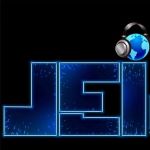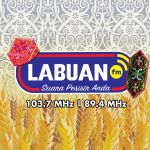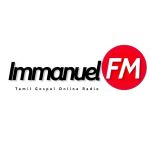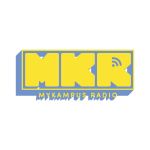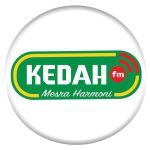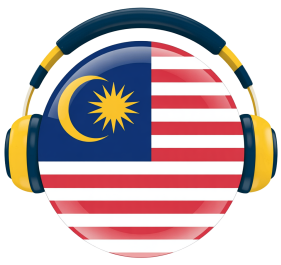Importing radioactive sources into Malaysia is a tightly regulated process due to the significant risks these materials pose to public safety, the environment, and national security. With applications in industries like healthcare (e.g., radiotherapy), oil and gas, and manufacturing, radioactive sources such as Cobalt-60 and Cesium-137 require strict compliance with Malaysia’s legal and regulatory framework. The Department of Atomic Energy Malaysia (Atom Malaysia), under the Ministry of Science, Technology, and Innovation, oversees these activities, ensuring adherence to the Atomic Energy Licensing Act 1984 (AELA) and international standards like the IAEA’s Code of Conduct on the Safety and Security of Radioactive Sources. This blog post provides a comprehensive guide to importing radioactive sources into Malaysia in 2025, covering regulations, licensing, costs, and practical steps.
Quick Answer
To import radioactive sources into Malaysia, obtain a Class C license from Atom Malaysia for handling radioactive materials, costing RM100–RM500 depending on the source type. Submit an application via the SEMS portal (sems.mcmc.gov.my) with device details, safety protocols, and proof of compliance with the Atomic Energy Licensing Act 1984 and IAEA guidelines. Secure import approval from the Ministry of International Trade and Industry (MITI) under the Strategic Trade Act 2010 for dual-use items. Ensure Radiation Portal Monitor (RPM) clearance at entry points like Port Klang and compliance with safety measures outlined in the 2010 Basic Safety Radiation Protection Regulations. Engage a licensed customs agent and budget RM2,000–RM10,000 for licensing, permits, and logistics.
Understanding Radioactive Sources and Regulations
What Are Radioactive Sources?
Radioactive sources are materials like Cobalt-60, Cesium-137, or Iridium-192 used in medical, industrial, or research applications. They are classified by the IAEA into Categories 1–5 based on activity levels, with Categories 1 and 2 (high-activity sources) requiring stringent controls due to their potential risks if mishandled.
Regulatory Framework in Malaysia
- Atomic Energy Licensing Act 1984 (AELA): Governs the import, possession, and use of radioactive materials, requiring licenses from Atom Malaysia.
- Atomic Energy Licensing (Basic Safety Radiation Protection) Regulations 2010: Specifies dose limits, safety protocols, and responsibilities for protecting workers and the public from radiation exposure.
- Strategic Trade Act 2010 and Amendment 2017: Regulates dual-use items, including radioactive sources, with oversight by the Ministry of International Trade and Industry/Strategic Trade Secretariat (MITI/STS). Requires import permits for controlled goods.
- IAEA Code of Conduct: Malaysia aligns with IAEA guidelines, requiring prior notification and consent for Category 1 and 2 source imports, ensuring recipient authorization and regulatory oversight.
Key Authority: Atom Malaysia
Atom Malaysia, formerly the Atomic Energy Licensing Board, regulates radioactive activities, issuing eight license types, including Class C for radioactive material handling. Its mission is to ensure “safe, secure, and safeguarded” use of radioactive sources, with Radiation Portal Monitors (RPMs) at borders like Port Klang detecting illegal imports (15 smuggling cases annually, per Atom Malaysia).
Steps to Import Radioactive Sources
1. Determine the License Type
Identify the appropriate license for your radioactive source:
- Class C License: Required for importing, possessing, or using radioactive materials (e.g., sealed sources like Co-60 for radiotherapy). Suitable for medical, industrial, or research purposes.
- Other Licenses: Class A (nuclear installations) or Class D (disposal) may apply for specific activities, but Class C is most relevant for imports.
Verify the source’s IAEA category (1–5) using the IAEA Categorization Safety Guide, as Category 1 and 2 sources face stricter controls.
2. Register with Atom Malaysia
- Eligibility: Importers must be Malaysian-registered entities (e.g., companies, hospitals) or authorized agents. Individuals cannot import radioactive sources without a licensed entity.
- Registration: Register on the SEMS portal (sems.mcmc.gov.my) with business details, contact information, and proof of authorization to handle radioactive materials.
- Cost: Registration is free, but licensing fees apply (see Step 3).
3. Apply for a Class C License
Submit a license application via the SEMS portal:
- Required Documents:
- Device description (e.g., isotope, activity level, IAEA category).
- Radiation safety plan, including storage, handling, and disposal procedures.
- Proof of trained personnel (e.g., Radiation Protection Officer certification).
- Facility safety assessment (e.g., shielding, security measures).
- Compliance with 2010 Regulations (dose limits, worker protection).
- Process:
- Submit via SEMS portal or contact Atom Malaysia (enquiry@atom.gov.my).
- Atom Malaysia reviews applications for safety and regulatory compliance, typically within 30–60 days.
- Cost: RM100–RM500 based on source type and activity level. Annual renewal fees apply (~RM100–RM300).
4. Obtain Import Approval from MITI/STS
Radioactive sources are classified as dual-use items under the Strategic Trade Act 2010, requiring an import permit from MITI/STS:
- Application:
- Apply via the e-Permit system (epermit.dagangnet.com) or MITI’s Strategic Trade Secretariat (sts@miti.gov.my).
- Provide export authorization from the source country, recipient license (Class C), and end-user certificate.
- For Category 1 sources, obtain government-to-government consent from the exporting country, per IAEA guidelines.
- Documents:
- Commercial invoice, packing list, and bill of lading.
- Safety data sheets and IAEA-compliant source specifications.
- Proof of Atom Malaysia license.
- Cost: Permit fees range from RM50–RM200, with processing times of 5–15 working days.
- Note: Failure to declare radioactive materials accurately (e.g., as dairy products) risks seizure and fines, as 15 smuggling cases are detected annually at Port Klang.
5. Ensure Customs and Border Compliance
- Customs Clearance: Engage a licensed customs agent experienced in radioactive materials (e.g., via Luwjistik’s brokerage services). Submit import permits and license details to the Royal Malaysian Customs Department (RMCD) via uCustoms (ucustoms.rmcd.gov.my).
- Radiation Portal Monitors (RPMs): All imports pass through RPMs at entry points like Port Klang, Johor Port, or KLIA. Undeclared sources trigger seizure and return to the country of origin or forfeiture after fines.
- Prohibited Items: Lightning arresters containing radioactive materials are banned, per RMCD regulations. Ensure your source is not on the prohibited list.
6. Implement Safety and Security Measures
Comply with the 2010 Regulations to protect workers and the public:
- Dose Limits: Adhere to dose constraints (e.g., 20 mSv/year for workers, 1 mSv/year for public).
- Storage and Security: Use shielded containers and secure facilities to prevent unauthorized access, aligning with IAEA Category 1–2 security requirements.
- Training: Employ a certified Radiation Protection Officer to oversee handling and emergency procedures.
- Disposal: Plan for safe disposal via a Class D license holder, as improper disposal risks environmental harm.
7. Coordinate with the Exporting Country
- IAEA Compliance: For Category 1 and 2 sources, the exporting country must notify Malaysia’s Point of Contact (Atom Malaysia) and obtain import consent before shipment.
- Documentation: Secure export licenses and safety certificates from the supplier, ensuring alignment with Malaysia’s requirements.
- Exceptional Circumstances: If Malaysia lacks specific regulatory controls, Atom Malaysia may approve Category 1–2 imports under exceptional circumstances (e.g., urgent medical needs), per IAEA guidelines.
8. Monitor and Report
- Tracking: Use Atom Malaysia’s mobile application (launched 2017) to register and track radioactive sources, ensuring regulatory control.
- Reporting: Notify Atom Malaysia of import details (e.g., arrival, usage) quarterly, especially for unsealed sources, similar to New Zealand’s general consent system.
- Audits: Expect periodic inspections by Atom Malaysia to verify compliance with safety and security protocols.
Costs Involved
- Licensing: Class C license: RM100–RM500; annual renewal: RM100–RM300.
- Import Permit: MITI/STS permit: RM50–RM200.
- Customs and Logistics: Agent fees, shipping, and handling: RM1,000–RM5,000, depending on source type and volume.
- Safety Compliance: Training, shielding, and storage setup: RM500–RM5,000.
- Total Estimated Cost: RM2,000–RM10,000 per import, excluding ongoing compliance costs.
Challenges and Opportunities
- Challenges: Strict regulations, high smuggling risks (15 cases annually), and complex documentation. Delays in exporting country consent or RPM detection issues can halt imports.
- Opportunities: Malaysia’s growing healthcare and industrial sectors (e.g., Lynas Rare Earths’ processing until 2026) increase demand for radioactive sources, creating opportunities for compliant importers. Robust border controls and IAEA alignment ensure safety.
Tips for Success
- Engage Experts: Use customs agents or consultants like TecEx or Luwjistik for compliance and clearance.
- Plan Ahead: Apply for licenses and permits 2–3 months in advance to account for processing times.
- Stay Informed: Check RMCD (ucustoms.rmcd.gov.my) and MITI (miti.gov.my) for updates on restricted goods and trade policies.
- Align with IAEA Standards: Ensure all documentation meets IAEA Code of Conduct requirements to avoid delays.
Conclusion
Importing radioactive sources to Malaysia requires a Class C license from Atom Malaysia (RM100–RM500), an import permit from MITI/STS (RM50–RM200), and compliance with the Atomic Energy Licensing Act 1984 and IAEA guidelines. Engage a licensed customs agent, ensure RPM clearance at ports like Port Klang, and implement safety measures per the 2010 Regulations. Budget RM2,000–RM10,000 for licensing, permits, and logistics. By navigating these steps and partnering with authorities like Atom Malaysia (enquiry@atom.gov.my) and MITI (sts@miti.gov.my), importers can safely bring radioactive sources into Malaysia for medical, industrial, or research purposes in 2025, contributing to a secure and innovative future.
